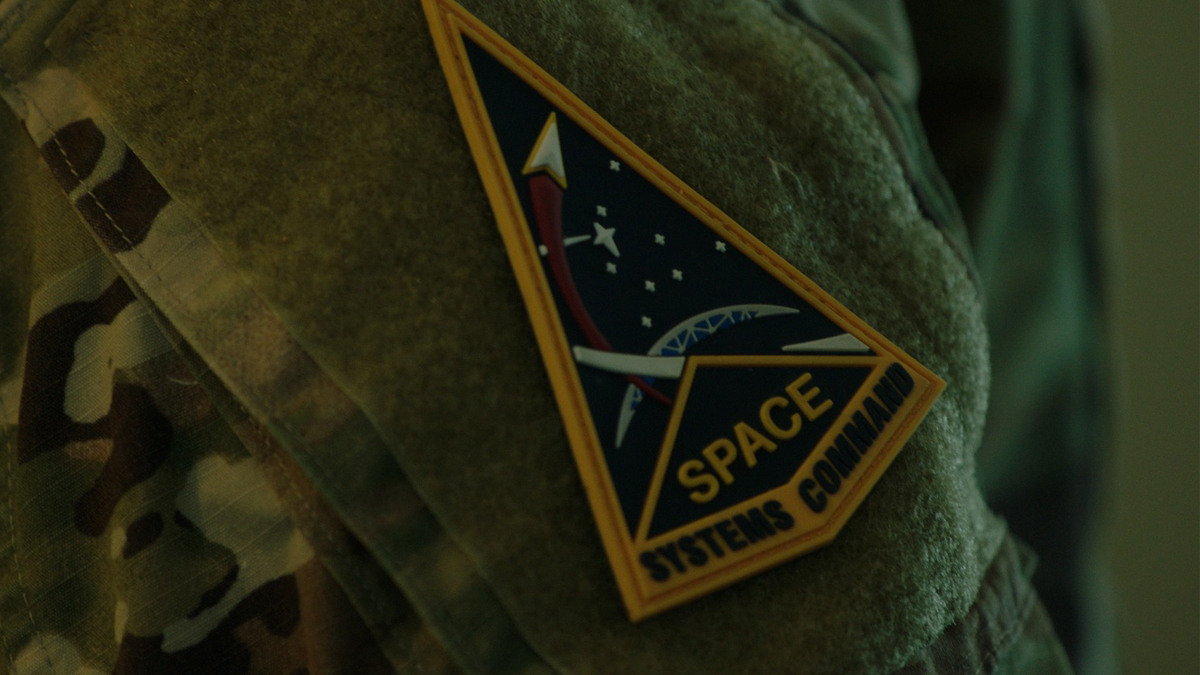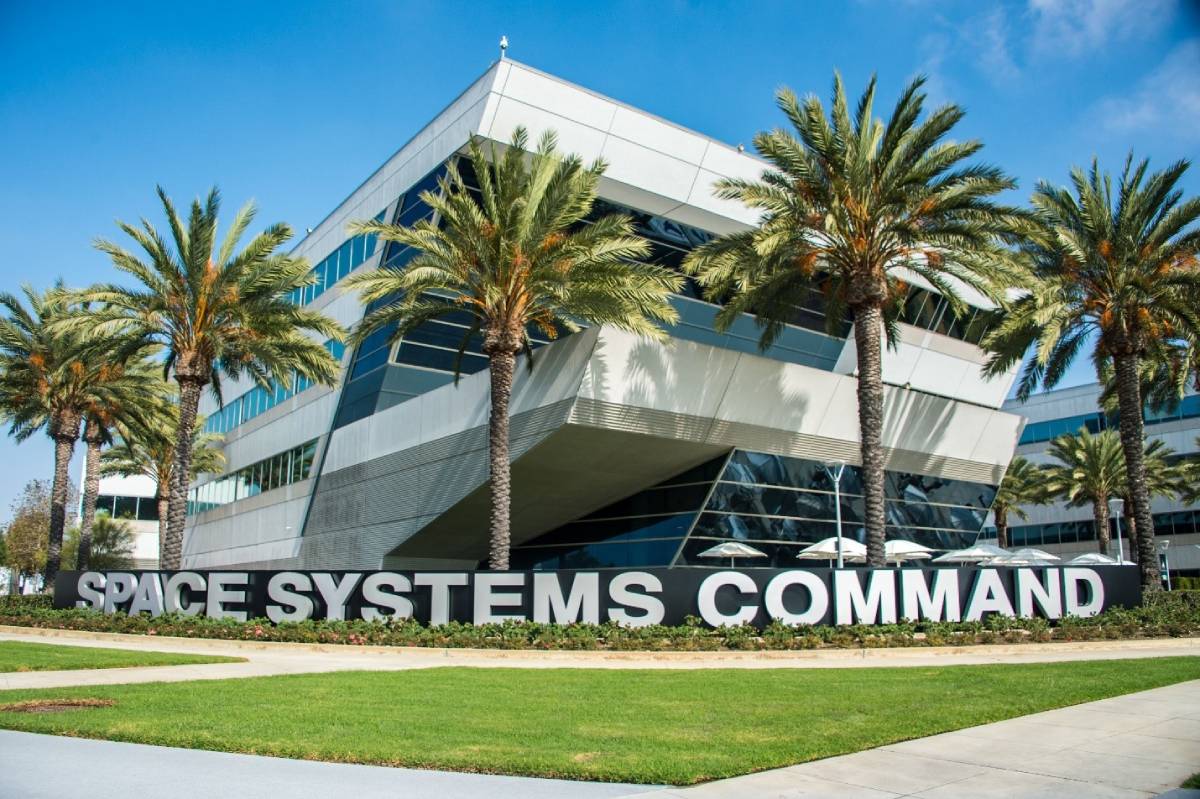 Space Systems Command, which houses the Commercial Space Office, is taking the lead in piloting a commercial space reserve capability. (Source: U.S. Space Force)
Space Systems Command, which houses the Commercial Space Office, is taking the lead in piloting a commercial space reserve capability. (Source: U.S. Space Force)
WASHINGTON — Last month, the U.S. Space Force awarded its first contracts under the Commercial Augmentation Space Reserve (CASR), a program to allow the military to access commercial space capabilities at a time of crisis or conflict.
The contracts for commercial space domain awareness (SDA) total just $1.1 million and run for 90 days. But the pilot will be a key test of how government partners with industry to leverage commercial solutions and take advantage of rapid innovation cycles.
While CASR’s success will depend on many factors, two stand out in the current dialogue: technological integration and industry incentives.
During a recent episode of the Constellations podcast, Col. Richard Kniseley, director of the Commercial Space Office (COMSO) under Space Systems Command (SSC), discussed SSC’s vision for a reserve capability developed in peacetime and ready to deploy in periods of heightened tensions.
“What we wanted to do was bring industry and government together and understand, how can we incentivize industry?” he said. “We built a framework that shows that we are going to need to have these capabilities on contract during peacetime. … I need that in order to get it integrated better into the overall space architecture.”
Integration: Having vs. Consuming Capacity
The SDA pilot is just the first of several CASR frameworks, each tailored to a specific mission area identified for commercial integration. The next frameworks to be rolled out will be tactical surveillance, reconnaissance and tracking (TacSRT) and commercial satellite communications, according to Kniseley.
Though satcom is the most mature and widely used commercial capability, with DoD spending roughly $1 billion per year on COMSATCOM, the realities of commercial integration are complex.
Rebecca Cowen-Hirsch, SVP of U.S. Government Strategy and Policy at Inmarsat, recently addressed one of the core challenges during a panel discussion of industry perspectives on CASR at Satellite.
“Having the capacity and the capability available … needs to be able to translate, on the user end, to the ability to consume it,” she explained.
For example, a Starlink terminal can’t talk to an Inmarsat satellite, and vice versa. Similarly, a single government ground segment may have several different modems; but that doesn’t mean all satellite providers will be able to land traffic at that site. Additionally, if a mission relies on a certain frequency band for high data throughput, can that mission still be carried out on a CASR backup if the specifications aren’t exactly matched?
Fundamentally, the challenge is interoperability, particularly among terminals and ground systems. Hardware virtualization is expected to help, but long acquisition timelines remain a challenge.
“Pilots need to explore not just what the commercial entity can do, but, importantly, how it can be consumed and the effect and outcome that’s expected so it can actually be used,” Cowen-Hirsch emphasized.
One of the key ways COMSO and SSC will be testing commercial-defense integration is through wargames and exercises in which operators not only get a feel for the commercial capabilities but also practice integrating them into concepts of operations.
 Space Systems Command headquarters at Los Angeles Air Force Base, California, Nov. 17, 2021. (Source: U.S. Space Force, Van Ha)
Space Systems Command headquarters at Los Angeles Air Force Base, California, Nov. 17, 2021. (Source: U.S. Space Force, Van Ha)
Balancing Requirements and Readiness
Another area that has emerged as a shared concern for both military and commercial stakeholders is the lengthy requirements process typically involved in defense procurement. Even the most dedicated businesses still weigh the value of a CASR contract against the cost of requirements and regulations.
In crafting the CASR program, Space Force has published some reliability metrics and requirements in areas like cybersecurity and supply chain transparency. Though vital, there is a risk they could become cumbersome and potentially disincentivize industry participation.
Jared Newton, Senior Technology Strategist at Planet Federal, noted there have been a few “strenuous requirements” communicated in the CASR readiness posture. “That’s not to say they’re not important,” he continued. “But in the face of a catastrophic event when the alternative is use nothing, I’d suspect that probably some of those requirements become less important if you’re faced with not having the capability at all.”
Space Systems Command reflected that sentiment in its 2023 pivot to a “buy what we can, build what we must” acquisition model. In his interview with Constellations, Kniseley said COMSO was working to limit the potential burden of CASR requirements.
“We want them to succeed,” he said of industry stakeholders. “And the best way to do that is to also make sure that our requirements don’t stifle commercial companies.”
Part of that, Kniseley continued, will be the ongoing work of bringing commercial technologies into defense architectures and specifically looking at areas where government can “adopt commercial standards … to make them easily integrated.”
What’s the Incentive When All of Space Becomes Contested?
Early discussions of CASR originally leaned on comparisons to the Civil Reserve Air Fleet (CRAF). While there are useful programmatic similarities, the analogy broke down fairly quickly when looking at the nature of conflict in space. Fundamentally, the risk to a CASR company is not limited to a particular area of responsibility (AOR), nor is the effect of an attack, be it kinetic, cyber or electronic warfare. “Space is different because those capabilities are over a contested AOR at any given point and the danger is there,” Kniseley said. “It’s just a known thing of doing business that you are going to pass over an AOR.”
To address the inherent risk, SSC has outlined several incentives, including access to wargames and exercises, high-level threat sharing and longer duration contracts—in the case of the SDA pilot, the contracts were originally envisioned as month-to-month but extended to three months. It has also determined that it will not publicly name companies that receive CASR contracts, though those companies can self-identify.
Paid pilot programs, such as the recently announced SDA pilot, can also send a strong signal to industry. However, there are concerns about the gap between a paid pilot and actually contracting for commercial capabilities that can be brought online.
Greg Caicedo, Vice President of SDA and Space Superiority at Kratos, noted the incentives needed by industry are “no-kidding contracts and long-term contracts” that fit a commercial business model.
“Having commercial capabilities and incentivizing us to be innovative within our respective organizations is an important element to making this thing work,” he said of CASR. “If it’s just done as a one-off contract, then it will never be implemented the way the expectation is. We as business entities need to be incentivized.”
As the program evolves and new frameworks are developed, SSC is still navigating sticky issues like indemnification and “denial of service” language that would prohibit industry from selling or providing services to certain customers during certain CASR conditions.
Explore More:
Podcast: Innovative Commercial Solutions, Expanding CASR and Accelerating Space Readiness
US Space Force Preparing Contracts for Using Commercial Assets During Conflict
Industry Offers Feedback on SSC’s Commercial Space Reserve Framework
Will SSC’s New Commercial Space Office Help Innovators Bridge ‘Valleys of Death’?
